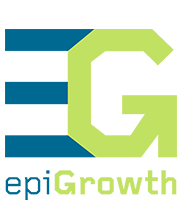
Implementing Nonprofit Cloud: My Journey

Salesforce released Nonprofit Cloud last year, introducing a foundational change in its architecture that supports nonprofits. Key processes are still there – program management, benefit management and disbursement, case management, fundraising, etc. – but the underlying data models and architecture are new and more complex than its predecessor, the Nonprofit Success Pack (NPSP).
Embarking on my first implementation of Nonprofit Cloud was a journey filled with bumps and challenges. As I navigated the new environment, I discovered valuable insights and strategies that I’d like to share with you. I hope that my experiences resonate with you and provide some guidance as you embark on your own Nonprofit Cloud journey.
Salesforce for Nonprofits vs. Nonprofit Success Pack (NPSP)
vs. Nonprofit Cloud
I’ve implemented NPSP but was new to Nonprofit Cloud, so I dove headfirst into the documentation and Trailheads—and was immediately disoriented. Salesforce for Nonprofits is an umbrella term that Salesforce uses to refer to both NPSP and Nonprofit Cloud, and paths through the documentation were sometimes crossed. As you dive in, make sure you’re clear on whether the articles you’re reading or the Trailheads you’re taking refer to NPSP or Nonprofit Cloud.
Salesforce Industries & Omnistudio
Nonprofit Cloud is not NPSP. NPSP is a set of packages that can be installed in any Enterprise Edition org, while Nonprofit Cloud is part of Salesforce Industries with Omnistudio as its engine. You may recall that Omnistudio found its way to Salesforce through the Vlocity acquisition.
Don’t let the term Omnistudio scare you. Despite my nearly 18 years in the Salesforce ecosystem, I had very little experience with Vlocity and Omnistudio. Those of you who’ve gone through the training know it’s not for the faint of heart. However, take heart, as Salesforce has done a great job of obscuring those complexities. If you’re a confident Salesforce Admin, you’ll be fine working with Nonprofit Cloud. Data models, Lightning pages, Flexcards, Data Processing Engine definitions, and permission sets have all been pre-built. You don’t need to be an Omnistudio developer.
The org I implemented did not come with the Omnistudio package pre-installed. Be prepared to install it. This tidbit was missing from the documentation. Several support tickets later, Salesforce was kind enough to add it. It didn’t help me but, hopefully, it will smooth the bumps in your path.
Householding
If you’re an NPSP veteran, you’re familiar with the householding model. In Nonprofit Cloud, householding has been replaced with a more powerful and flexible tool called Actionable Relationship Center (ARC). While you can create household relationships with ARC, its capabilities open up wider relationship model possibilities, such as geographic or virtual caregiver communities or organizational groupings.
You may find you’re not ready to dive in that deeply early on. For modeling simpler relationships, you can start using the Related Contacts and Related Accounts related lists, which are driven by the Account Contact Relationship junction object. This capability is available by enabling the Contact to Multiple Accounts functionality (Setup → Account Settings).
Data Models & Permission Sets
The Nonprofit Cloud data models will be unavailable until you open access to them with permission sets. Read the documentation carefully to understand which permission sets you need. To get started, you’ll need:
- Program and Benefit Management Access
- Advanced Program Management
- Omnistudio User
- Omnistudio Admin
- Data Pipelines Base User
- ARC Access
There are more, so if the documentation references objects, functionality, or tools you don’t see in your org – check your permissions.
The data models are complex. Don’t feel you need to use all of the objects in a model as you implement. Start small, keep it simple, and grow over time. For example, there are over twenty objects in the Fundraising data model. In my project, we used one: Gift Transactions. As my client expands their fundraising capabilities, we’ll then expand their use of the Fundraising data model.
Helping Clients Visualize the Data
Don’t forget there’s a flipside to the technical work you’re doing in the backend. You also need to help your clients understand how to use what you’re building. I find it helpful to create simplified data models and diagrams – each with its own varying degree of technical inaccuracies – to help them grasp the relationships between the data they’ll be working with.
Below is an over-simplified, high-level diagram I used to introduce my client to their org. In the appendix to this article, I’ve included two more examples of diagrams I created for this project (note: there are some custom objects in there that aren’t part of the standard data models).

Data Processing Engine
Programs, Benefits, and a few other objects have Omnistudio Flexcards on their layouts to display summaries and rollups. The calculations are driven by Data Processing Engine Definitions. (Setup → Data Processing Engine) The definitions are pre-built but must be run manually until you automate them with a Schedule-Triggered Flow (hint: you must clone the pre-built jobs and work with the clones).
Automating the Benefits aggregation job with Flow only requires a single Action, but it can still be tricky, as it requires five dates as input. Here are the formulas you can use in your Flow:
- Current Date = TODAY()
- Current Month Start Date: DATE(YEAR(TODAY()), MONTH(TODAY()), 1)
- Current Year Start Date: DATE(YEAR(TODAY()), 1, 1)
- Previous Month Start Date = DATE(YEAR(TODAY()), MONTH(TODAY())-1, 1)
- Previous Year Start Date = DATE(YEAR(TODAY())-1, 1, 1)
I hope you find these tips helpful. Despite the initial confusion I faced navigating documentation, overall, I’ve always found Salesforce’s documentation invaluable. Use the know-how you’ve already acquired as an admin and follow the documentation closely, and you’ll have Nonprofit Cloud implemented before you know it.
Here are links to documentation and trails that I found useful:
EpiGrowth
I took my Nonprofit Cloud journey as a member of the EpiGrowth team. While my tenure here is still young, I’ve worked with many of my colleagues for over a decade. They’re a great team and an experienced Salesforce partner. Contact Us today to see how we can help with your Salesforce journey.
Additional Diagrams








